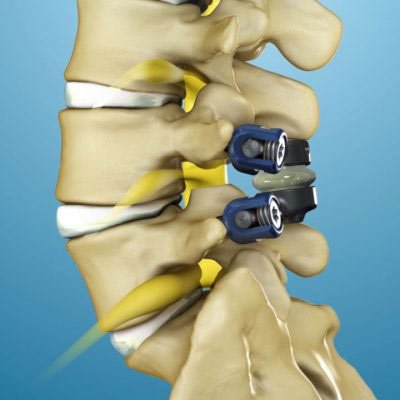If you’ve been told that your back pain is simply a natural part of aging, don’t listen. Growing older doesn’t naturally include having pain. Visit the best-in-class pain management doctors at New York pain management in Manhattan. They focus on delivering interventional treatments using the latest in pain treatment options. A common condition that athletes and elders suffer from is spinal stenosis, which often is difficult to diagnose and treat properly. Because your top-rated pain doctors have so much experience treating this spinal condition, they’re prepared to try a wide range of treatments, including a minimally invasive technique called spinal stenosis surgery. It’s proven to be successful in relieving the pain of spinal stenosis.
Spinal stenosis is a condition that causes your spinal canal to narrow. It can be caused by wear-and-tear over the years or an injury to your back. Spinal stenosis surgery may be considered when other approaches to spinal stenosis treatment such as cortisone injections and physical therapy haven’t delivered sufficient pain relief.
If you’ve been diagnosed with spinal stenosis or if you have significant neck pain or back pain, see your pain doctor. If you feel arm, leg, hand or foot cramps, weakness, numbness or tingling, you need the attention of one of the top pain management doctors in New York. At pain center NY, the best pain management doctors determine the most appropriate spinal stenosis treatment for your needs.
Conditions that Benefit from Spinal Stenosis Surgery
Spinal stenosis occurs when something happens to cause the open space in your spine to become narrower. If it becomes too narrow, you feel pain even when you stay still. Your Manhattan pain management doctor may recommend spinal stenosis surgery.

- Bone spurs. Arthritis in the neck or back can cause an overgrowth of bone, called bone spurs, into the spinal canal.
- Thickened ligaments. Over time, the ligaments can become thickened and stiff. These are the strong cords that hold the bones of your spine together. Stiff ligaments may pressure your spinal cord.
- Herniated discs. The discs between your vertebrae are designed to provide support and cushioning. They can dry out with age, and the softer nucleus of a disc then pushes through the outer edge and toward the spinal column. This is also known as a ruptured disc or a slipped disc.
- Spinal injuries. When your spine is injured in a car accident, sports injury or other type of trauma, vertebrae can be dislocated or fractured. As nearby tissue swells, it puts pressure on the spinal cord.
- In rare cases, abnormal growth can form inside the spinal column, causing the area to narrow and stressing your spinal cord.
- Congenital spinal stenosis. Some people are born with a small spinal canal, causing pain from an early age.
What to Expect from Spinal Stenosis Surgery
The goal of the surgery is to decompress the affected area to relieve pressure on your spinal cord or nerve roots and create more space in the spinal canal. The most common type of minimally invasive surgery for spinal stenosis is called a laminectomy. In this procedure, a portion of the vertebrae known as the lamina is removed in order to ease pressure on the nerves by creating more space around them.
If you’re suffering significant instability, your pain specialist may opt to perform a spinal fusion surgery, which means the affected vertebra is linked to adjoining vertebrae using metal hardware and possibly a bone graft. Laminoplasty is a procedure done as a form of cervical spinal stenosis treatment in which space within the spinal canal along your neck is opened by using metal hardware.
Recovery from Spinal Stenosis Surgery
When you have lumbar spinal stenosis surgery or cervical spinal stenosis surgery done by one of the best pain management doctors in NYC, your risk of complications is greatly reduced. You may experience some discomfort for a few days after surgery, which is normal and can be controlled with anti-inflammatory or analgesic medication. Doctors usually recommend light exercise within a few days after surgery to reduce swelling and prevent stiffness.
Pain in your back or your neck is something you shouldn’t have to continually experience. Contact Pain Management NYC for an appointment and consultation. Experienced pain management doctors listen to your concerns, do what’s necessary to reach an accurate diagnosis and then develop a treatment plan designed to meet your goals and lifestyle requirements.

Leon Reyfman, MD, is a top-rated, best-in-class interventional pain management doctor. He is a nationally recognized pain relief specialist and is among the top pain care doctors in New York City and the country. He is an award-winning expert and contributor to prominent media outlets.
Dr. Leon Reyfman has been recognized for his thoughtful, thorough, modern approach to treating chronic pain. He has been named a “top pain management doctor in New York” and one of “America’s Top Doctors™” for advanced sports injury treatments. Among other accolades, he was voted by peers as a “Castle Connolly Top Doctors™” and “New York Super Doctors™”. Dr. Leon Reyfman was a part of the medical team at the 2016 Summer Olympic Games in Rio de Janeiro, Brazil.
